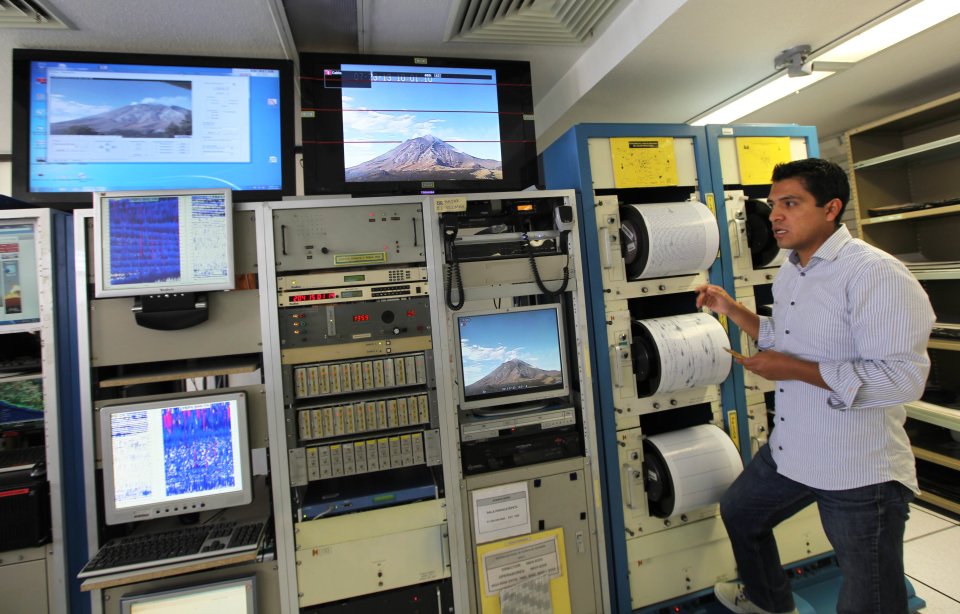
MEXICO CITY (AP) — In a clean, hushed room in the south of Mexico City, cameras, computer screens and scrawling needles track the symptoms of a special patient, as they have every second of every day for the past two decades. The monitors indicate that "Don Goyo" is breathing normally, even as he spews hot rock, steam and ash.
That kind of activity isn't unusual for the 15,000-foot (4,500-meter) volcano, Mexico's second-highest, whose formal name is Popocatepetl, or "Smoking Mountain" in the Aztec language Nahuatl. But this volcano, personified first as a warrior in Aztec legend and now as an old man grumbling with discontent, is in the middle of two metro areas, where his every spurt can put 20 million people on edge.
Mexico's National Disaster Prevention Center laboratory keeps a round-the-clock watch on Popocatepetl, with anywhere from six to 15 technicians analyzing data for signs of a full-scale eruption, which they can never fully anticipate.
Though lava or glowing rock would only travel so far, an explosion could be deadly for 11,000 people in three farming villages within 10 miles (16 kilometers) of the base because of landslides and hot gas. A spectacular plume of ash could also wreak havoc on one of the world's largest metro areas, much as it did in 2003, when the sky over Mexico City more than 40 miles (65 kilometers) away nearly went dark in the middle of the afternoon. The neighboring city of Puebla on the other side of the volcano from the capital would also be clouded over.
"The volcano is like a patient, and we observe the different aspects," said the center's technical director Gilberto Castelan. "Here we receive over 60 indicators in real time."
The 20-by-30-foot (6-by-9-meter) laboratory resembles those that once housed old giant supercomputers, everything plain white with a server at one end and screens all around. Five remote-controlled cameras positioned on the side of the mountain emit real-time images, while sensors feed data to the constantly scrolling seismographs as the crew and volcanologists analyze the concentration of gases and changes in the shape of the mountain. The loudest laboratory sound is a regular ping that alerts technicians to every seismic shift, at least a half dozen an hour.
The data helps set the "volcano stoplight," a three-color system in which green means little activity, yellow means warning and red starts the evacuation process — something that has occurred only twice since 1994, when the volcano awoke again after sitting dormant for seven decades.
"It's one of the most advanced laboratories of its kind in the world, and the scientists in charge are using the best methods," said Michael Sheridan, a volcanologist at the University of Buffalo in New York who has studied Popocatepetl. "It is very difficult to predict the behavior of a volcano that has not had an eruption in recent history."
Earlier this month, Popocatepetl released ash that grounded plane flights and dusted cars, but it quieted down enough last week for the warning to drop from yellow-3 to yellow-2. The Mexican government has designated evacuation routes and shelter locations in the case of a bigger explosion.
Yahoo News
No comments:
Post a Comment